SaaS businesses are discovering that customers choose and recommend them based not on flashy marketing or super fancy product features but on the experience of engaging with the company and the value it delivers. Delivering a cohesive and die-hard customer experience doesn’t happen accidentally. Customer success is a mindset or a continuous journey before it’s a department that takes an analytical approach towards retaining and constructing long-lasting relationships with customers.
Rav Dhaliwal, Investor and Venture Partner at Crane Ventures, Lindsey Serafin, VP of Customer Success at Snyk.io, and Caitlin Sullivan, Director of Customer Success at Vanta, discuss what customer success is, who owns it, what customer metrics you should look at, and what you need to focus on if you want to scale digital customer success. Hook Founder & CEO Firaas Rashid moderated the session.
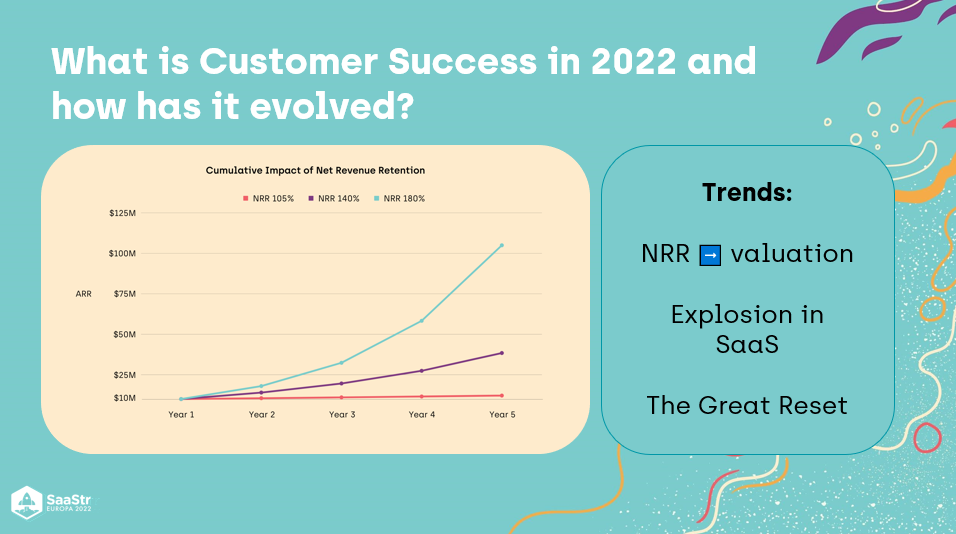
What is customer success, and how has it evolved?
Ten years ago, customer success was described in relation to other functions like support or account management. Fast forward to 2022, customer success is an established function at even many early-stage software companies.
Customer success is wherever your business needs at that time to connect the edges of your product or offering to the actual needs and value that your customer receives at the end.
In other words, customer success is any function or group creating conditions for future revenue. Annual contract value (ACV) builds companies, but net revenue retention sustains them. In that case, you need a function—customer success—that helps drive fast value and creates the conditions for net revenue.
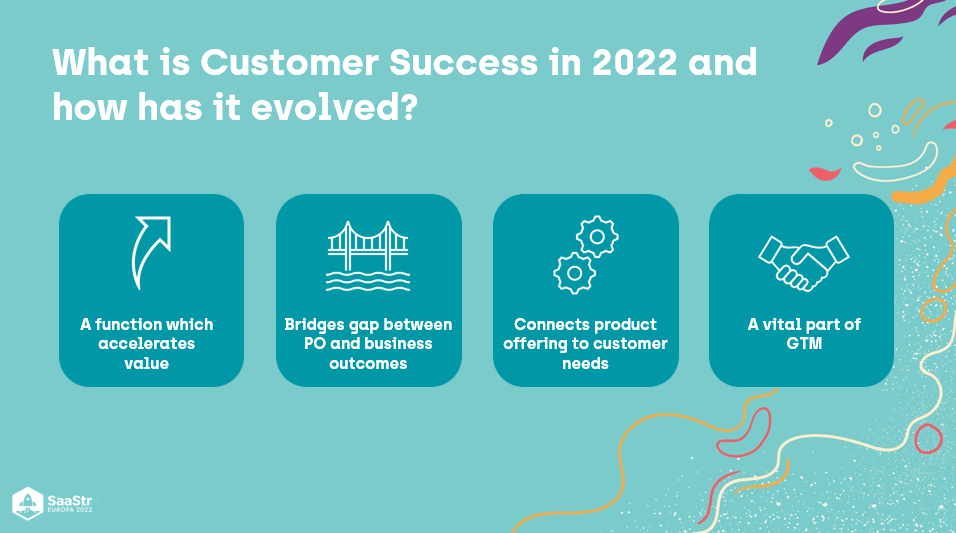
Who should be your first customer success hire?
There are several factors to consider with your first hire. First, you need somebody who has done the job before so that they will bring with them the relevant knowledge and competencies from previous roles. Then determine if you need someone in this role who leans more towards the technical side or who is good at relationship management.
Regardless, this first hire must be empathetic. Customer success managers should have the ability to understand the needs of others and be aware of their feelings and thoughts.
“You need to be accountable. Always deliver on expectations, don’t shy away from solving problems, and take ownership of challenges.” – Caitlin Sullivan
Another good strategy is to find someone from your industry who knows the space and practices and can connect your product to the customer’s environment and business.
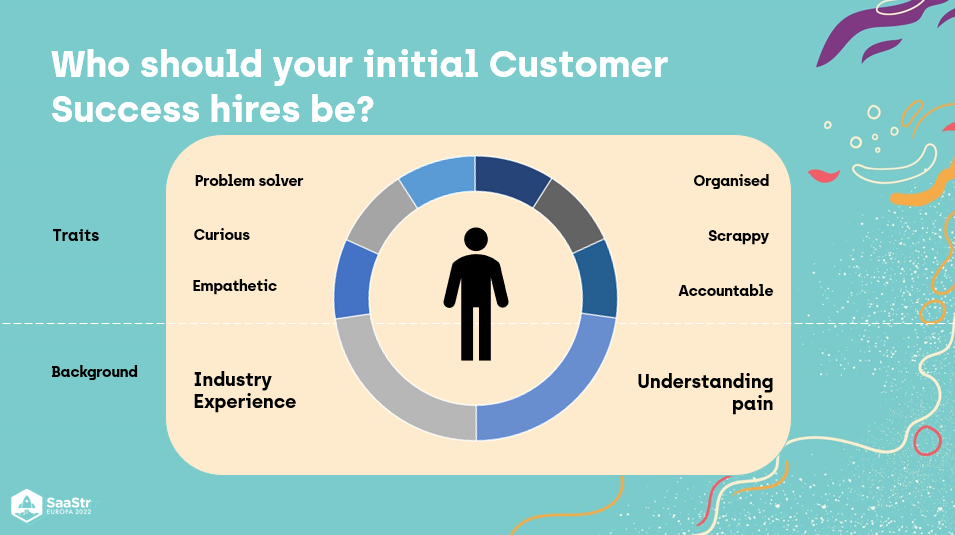
How do you measure your customer success?
Measuring the success of any SaaS function requires a solid understanding of both objectives and metrics. Customer success is no exception. But what exactly do you have to measure to determine if your customer success program performs as expected?
“Customer success boils down to two important metrics: net revenue retention and time-to-value.” – Rav Dhaliwal
Net revenue retention (NRR) is a metric that measures the percentage of revenue retained from existing customers over a particular period of time. This metric helps you understand if the product or service fits the needs of the users.
Time-to-value (TTV) is the time it takes for a user to realize value from your product. The shorter the TTV metric, the better. When new customers can quickly see how your product will provide an ROI, they’re much more likely to become loyal, long-term users.
Although NRR will always be top of mind, SaaS businesses need to re-assess their metrics from time to time as their business grows and customer segments evolve.
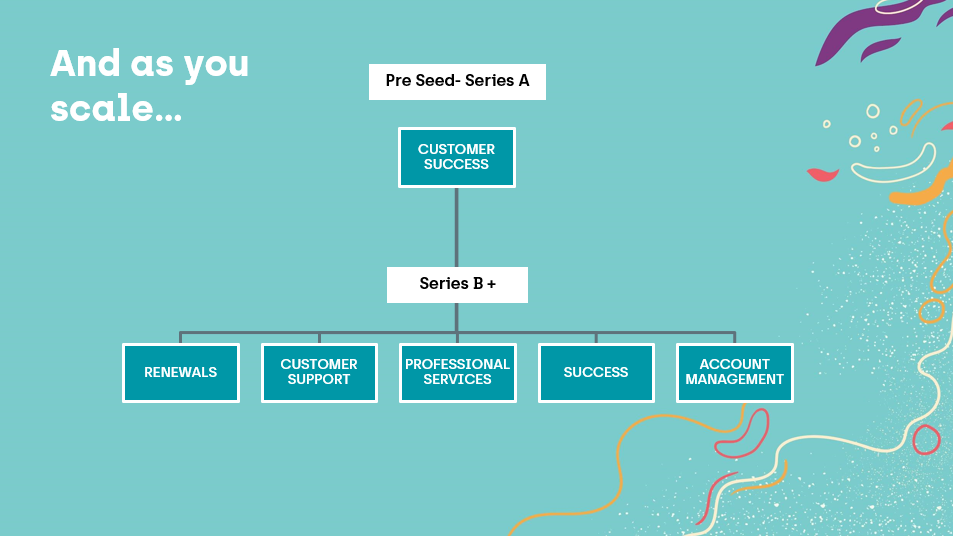
What is digital customer success, and why does it matter?
Today, most of your customers want to be served digitally. An effective digital customer success strategy will also help you scale everything you do.
You don’t need to get on the phone with each and every customer unless you have to. However, if they can find an answer or read an article that’s going to tell them what they need to know about the product, then you can save your time and theirs.
“Digital customer success allows you to deliver value for customers at scale via a customized approach based on specific customer needs.” – Lindsey Serafin
The objective here is to help your users receive more value from your product, accomplish their desired outcome, and experience value faster.
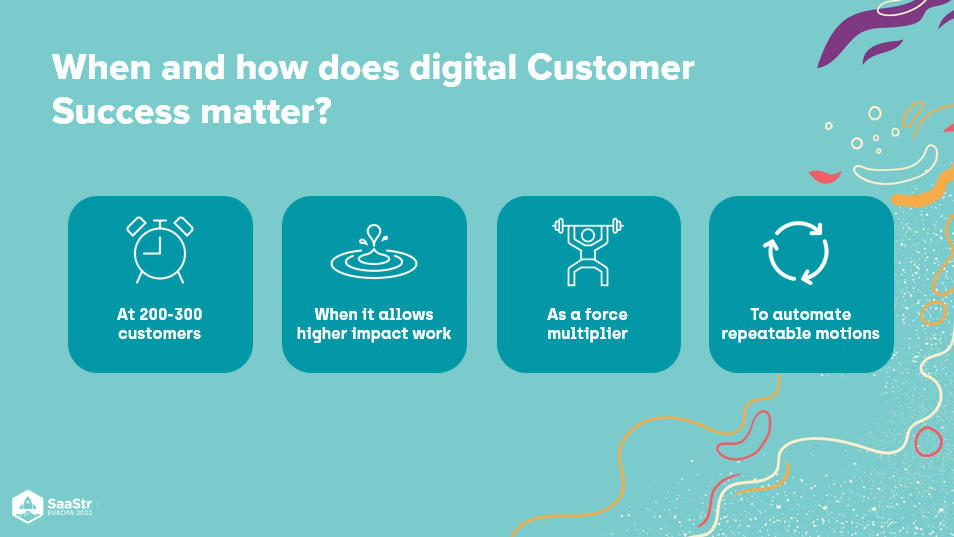
Key takeaways
- Know and communicate with your team the definition and value of customer success for your company.
- Get the product team in front of customers early and often, then hire customer success managers as soon as you can.
- Have a customer journey map that will tell you about every engagement a customer has with your brand.
- Seek to understand your customer’s business problem and how your product solves that problem.
- Put the customer at the center of your value proposition and operations.
The post Scaling Customer Success in 2022 From Series A to IPO with Snyk io, Vanta, Crane, and Hook (Video) appeared first on SaaStr.
via https://www.aiupnow.com
Amanda Beaty, Khareem Sudlow
